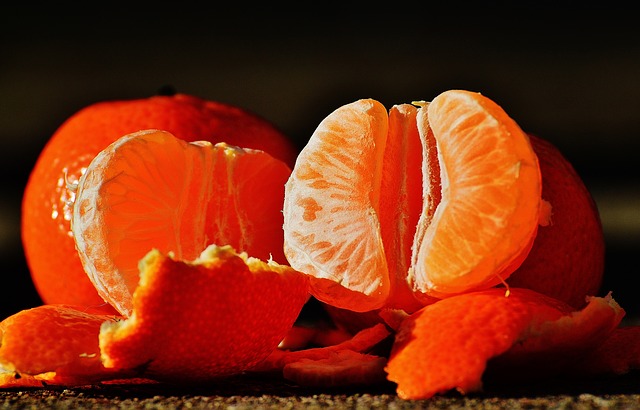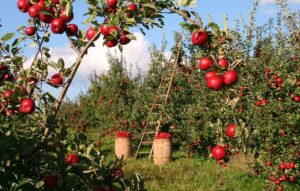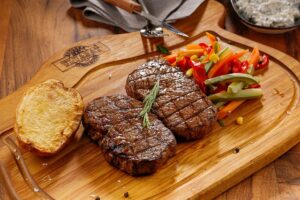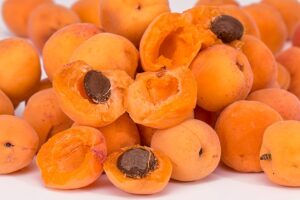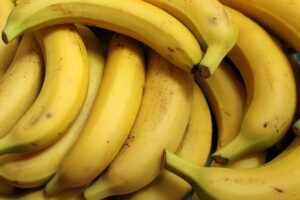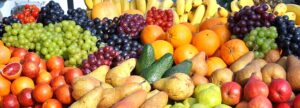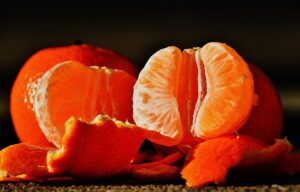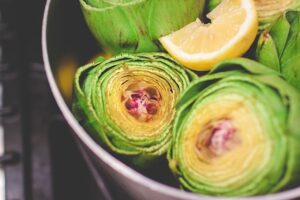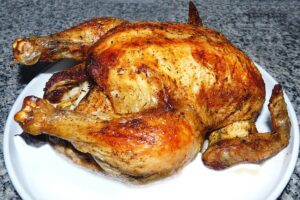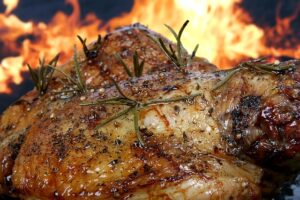Category: Food
1. Preventing Foodborne Illness – Food Safety, Sanitation
PHFs are foods that support the growth or survival of disease-causing bacteria (pathogens) or foods that may be contaminated by pathogens. Generally, a food is (1)…
Apr 28, 2017 — TCS food, like dairy products, eggs, meat, and poultry support the growth of bacteria, hence ideal for bacterial growth.(2)…
There are sufficient nutrients available that promote the growth of microorganisms. Protein-rich foods, such as meat, milk, eggs and fish are most susceptible.(3)…
2. ServSafe Chap 1 and 2 Flashcards | Quizlet
What food items are better able to support the growth of pathogens. ○ Milk and dairy products ○ meat, beef, pork and lamb ○ fish ○ baked potatoes Rating: 5 · 1 review(4)…
NHEA – Viruses, Bacteria, Parasites, Fungi Learn with flashcards, games, TCS food supports the growth of bacteria better than other types of food.(5)…
Oct 17, 2019 — Foods that are contaminated may not look, taste or smell any different from foods that are safe to eat. Symptoms of food poisoning vary and (6)…
3. Food – What Conditions Allow Pathogens to Grow?
Pathogens require food in order to grow, multiply, and, in some cases, produce toxins. Some foods support the rapid growth and replication of pathogens and (7)…
May 18, 2020 — TCS food, like dairy products, eggs, meat, and poultry support the growth of bacteria, hence ideal for bacterial growth. Other TCS food items (8)…
4. Discover Which Food Item Is Ideal For Bacterial Growth
Sep 2, 2021 — Myth: Foods That Allow Microorganisms to Grow are Called Parasites · Meat including beef, pork, lamb, etc. · Gravies containing meat, mixed with (9)…
High-risk foods may contain pathogenic microorganisms and will support formation of toxins or growth of pathogenic microorganisms and include raw meat, (10)…
High-risk foods may contain pathogenic microorganisms and will support formation of toxins or growth of pathogenic microorganisms and include raw meat, (11)…
It is important to store, prepare and cook foods safely in order to reduce the risk of bacteria multiplying and causing foodborne illness. Bacteria need the (12)…
Figure 3. Common biological hazards in a food retail operation. Bacteria. Viruses. Bacillus cereus Foods that support the growth of bacteria. Acidity.12 pages(13)…
5. What conditions encourage bacteria to grow? – Florida …
Africanized Honey Bees · Bee Removal or Eradication in Florida · Cannabis/Hemp · Dog Fly Facts · Emergency Food and Water Supplies · Emergency Support Function 11 (14)…
F Food. Pathogens need a source of food — especially proteins or Conditions that support the growth of microbial pathogens include:.1 page(15)…
Food that support the rapid growth of Microorganisms Foodborne Infections: Result when a person eats food containing pathogens, which then grow.83 pages(16)…
6. Food Safety Part 2: Temperature Control | VLS – Virtual Lab …
Keeping food at a proper temperature is one of the most important things a food handler can do to prevent bacteria that cause foodborne illness from growing (17)…
When food has stayed too long at temperatures good for pathogen growth Most bacteria need nutrients to survive; TCS food supports the growth of bacteria (18)…
Food poisoning bacteria can multiply very quickly, particularly in certain conditions. The factors that affect bacterial growth include:.(19)…
These foods are sometimes called potentially hazardous foods (PHFs) because they become hazardous if their bacteria growth is not controlled.(20)…
7. Foodborne pathogens – NCBI
by T Bintsis · 2017 · Cited by 164 — Foodborne illness occurs when a pathogen is ingested with food and from 0.912 to 0.961 and readily supports B. cereus growth [8],[10].(21)…
the necessary intrinsic factors to SUPPORT THE GROWTH of pathogens. The two terms do not imply whether or not the foods have initial loads of bacteria, 109 pages(22)…
Fluid exudate supports growth of microorganisms and contaminates other plant foods and equipment used in harvesting. Contamination by plant pathogens in the (23)…
8. FAT TOM: 6 Factors That Contribute to Food Spoilage – The …
Jun 26, 2019 — The two aren’t necessarily the same thing, although they’re both caused by the growth of microbes like bacteria and mold. Still, you’re not (24)…
What promotes the rapid growth of bacteria? — What types of food do microorganisms need to grow? What promotes the rapid growth of bacteria? What helps in (25)…
Foods That Need Time and Temperature Control. Any type of food can host contaminants, but some foods are better than others for the growth of pathogens. Foods (26)…
9. FOOD SAFETY INFORMATION PAPERS PATHOGENS – Corn …
Conditions Permitting the Growth of Pathogenic Microorganisms. While most foods and ingredients contain sufficient nutrients to support microbial growth, (27)…
Raw vegetables and fruits are not suitable for bacterial growth. Raw carrot, raw onion, raw garlic, raw ginger, potatoes, and so much more food items that we (28)…
10. How Microbes Grow – Science in the News (Harvard University)
Jul 20, 2020 — This cell has a cell wall and also flagella (an appendage some bacteria use for movement). Mechanisms of microbial growth. Microbial growth (29)…
The growth of a bacterial population occurs in a geometric or exponential manner: with Learn about bacteria as agents of decomposition, food spoilage, (30)…
Culture media is the food used to grow and control microbes. Culture medium or growth medium is a liquid or gel designed to support the growth of (31)…
Potentially Hazardous Foods (PHFs) are foods which support rapid growth of Six factors affect the growth of bacteria: Food, Acidity, Temperature, Time,.(32)…
by K Hunt · 2018 · Cited by 11 — Listeria monocytogenes is a foodborne pathogen that causes listeriosis, for food producers to determine if their food supports the growth of L.(33)…
Aug 13, 2020 — Food preservation involves preventing the growth of bacteria, fungi (such as yeasts), or other micro-organisms (although some methods work (34)…
Pathogens on fresh fruits and vegetables are Salmonella, Shigella, be recovered even though the pH may be too low to support growth of these organisms.(35)…
Refrigerate foods quickly because cold temperatures slow the growth of harmful bacteria. Do not over-stuff the refrigerator. Cold air must circulate to help (36)…
Dec 31, 2001 — be noted that changes in pH can transform a food into one which can support growth of pathogens (ICMSF 1980). For example, several botulism (37)…
by L Mogren · 2018 · Cited by 41 — These pathogens may enter the horticultural value network during primary to avoid temperatures that can support growth of pathogens.(38)…
Excerpt Links
(1). Preventing Foodborne Illness – Food Safety, Sanitation
(2). Which Food Item Is Ideal For Bacterial Growth? – Marvelous Chef
(3). FAT TOM – Wikipedia
(4). ServSafe Chap 1 and 2 Flashcards | Quizlet
(5). Pathogens Flashcards | Quizlet
(6). Most Common Foodborne Pathogens – Academy of Nutrition …
(7). Food – What Conditions Allow Pathogens to Grow?
(8). Which food is at a temperature that allows bacteria to grow …
(9). Discover Which Food Item Is Ideal For Bacterial Growth
(10). Potentially Hazardous Foods – an overview – ScienceDirect.com
(11). Potentially Hazardous Food – an overview – ScienceDirect.com
(12). Conditions needed for bacterial growth – Food safety – CCEA
(13). FOOD SAFETY – Purdue Extension
(14). What conditions encourage bacteria to grow? – Florida …
(15). FAT TOM – IDDBA
(16). LAUSD Food Services Division ServSafe Certification Study …
(17). Food Safety Part 2: Temperature Control | VLS – Virtual Lab …
(18). Common symptoms of foodborne illness – ServSafe
(19). Food poisoning – prevention – Better Health Channel
(20). TCS Foods Poster
(21). Foodborne pathogens – NCBI
(22). Evaluation and Definition of Potentially Hazardous Foods
(23). Spoilage of Vegetables and Fruits – Wiley Online Library
(24). FAT TOM: 6 Factors That Contribute to Food Spoilage – The …
(25). Which of the following food that supports the rapid growth of …
(26). Tips for Time and Temperature Control (TCS) Foods – Gordon …
(27). FOOD SAFETY INFORMATION PAPERS PATHOGENS – Corn …
(28). which of the following foods does not support bacteria growth?
(29). How Microbes Grow – Science in the News (Harvard University)
(30). bacteria – Growth of bacterial populations
(31). Culturing Bacteria | Boundless Microbiology – Lumen Learning …
(32). Day 1 Review – NYC.gov
(33). Challenge Studies to Determine the Ability of Foods to … – MDPI
(34). 11.6: Food Preservation – Medicine LibreTexts
(35). Fruits and Vegetables – BCN Research Laboratories
(36). The Core Four Practices of Food Safety | FightBAC
(37). Chapter 3. Factors that Influence Microbial Growth – MSU …
(38). The Hurdle Approach–A Holistic Concept for Controlling Food …

